If you are looking to pursue an affordable bachelor’s degrees in Hawaii, the state is home to more than 25 institutions of higher learning, including state and private two-year, community colleges as well as four-year schools, graduate institutions, variable term schools, and religious-focused institutions. Although Hawaii is best known as one of the most popular vacation destinations in the world for adventurous families and honeymooners alike, namely due to its laid-back locals, high-class resorts, thrilling water sports, enormous volcanoes, and spectacular beaches, it also has a lot to offer students seeking a high-quality college education.
Despite its small size, Hawaii boasts a number of postsecondary options for students seeking careers in in-demand industries such as marine biology, oceanography, business administration, and the social sciences, making the process of selecting a school challenging. Most college-bound students seek maximum affordability, a desirable location, and a reasonable program duration when they begin to compare bachelor’s degree colleges in Hawaii. To help in this process, we have applied a specific ranking methodology to the top eight schools in the state based on tuition rates, student-to-faculty ratios, and graduation rates.
Methodology
As you begin the process of narrowing down the most affordable bachelor’s degree colleges in Hawaii, it is important to focus on three key factors: tuition rates, class size, and student satisfaction. However, keeping track of this information for every school on your list can be time-consuming and overwhelming, which is why we decided to compile data in one list for you to easily reference at your convenience. To help determine the “best value” colleges by finding the balance between quality and affordability, we developed the following ranking methodology. Using the College Navigator tool at the National Center for Education Statistics (NCES), we conducted a search for the term “colleges in Hawaii” to get a comprehensive list of all of the colleges and universities in the state. We then narrowed down our list to the top eight most affordable institutions. Since programs can change from year to year and even semester to semester, we checked each school’s website to ensure the information we were providing was current as of 2019.
Average Cost of Attendance
As you begin your search to find the most affordable bachelor’s degree colleges in Hawaii, one of the first things you might look at is the average cost of attendance, or how much you can expect to spend on your degree. Although it might be tempting to automatically choose the cheapest program offered, regardless of the school, try to select a college or university based on what it offers as well. For example, even if a school offers a yearly tuition of $1,000 but it does not provide a major in which you are interested, you will ultimately waste $1,000 on a degree that means nothing. Since this is an article dedicated to finding low-cost, inexpensive programs in Hawaii, it made sense to award the most points to schools with the lowest tuition rates. We ranked tuition based on the cost of one year of study for in-state students completing 15 hours per semester. Out-of-state rates are also provided for your reference only.
Points:
Under $7,500: 3 points
$7,500 to $15,000: 2 points
$15,001 and above: 1 point
Student-to-Faculty Ratio
The student-to-faculty ratio refers to the number of faculty members employed by the school compared to the number of students pursuing degrees. It is helpful for determining not only the size of the school itself, but it also gives prospective students a better idea of how many other students they will see in their classes. This figure is important for a number of reasons, mainly because it provides students with information about how personalized or individualized their instruction may be. For instance, colleges and universities with low student-to-faculty ratios may be more likely to provide opportunities for forming connections between faculty and students, less competition between students, more personalized instruction from professors, and more chances for class participation. Although large universities with high student-to-faculty ratios have their benefits as well, for the purpose of this ranking, we awarded the most points to institutions of higher learning with the lowest student-to-faculty ratios.
Points:
10:1 or less: 3 points
11:1 to 15:1: 2 points
Greater than 15:1: 1 point
Graduation Rate
Above all else, you need to trust that an institution will deliver on its promise to provide a high-quality, affordable degree. If a school reports a low graduation rate, that can indicate something about that college or university: It might mean that students find student life unaffordable, the tuition rate is too high for the quality of education, they are disappointed by the staff or their professors, or they are not receiving the academic support they need to be successful. While a low graduation rate does not automatically mean that a school is unfavorable, it could be a red flag. For this reason, we felt that schools with high graduation rates and, ultimately, high levels of student satisfaction deserved the most points.
Points
More than 50 percent: 3 points
Between 30 percent and 50 percent: 2 points
Less than 30 percent: 1 point
Ranking Top 8 Most Affordable Bachelor’s Degree Colleges in Hawaii
8. Hawaii Pacific University
Honolulu, Hawaii

Points: 5
School Website
Hawaii Pacific University is a nonsectarian, private university in Honolulu, Hawaii. The largest private university in the central Pacific, HPU is a model of affordability and diversity. With students from more than 70 countries and all 50 states, HPU is recognized as one of the most culturally rich private universities in the U.S. In fact, HPU offers a one-time $500 visit grant to prospective undergraduate students who enroll. Known for its programs in aquaculture, marine biology, and related subjects, students benefit from access to one of the island’s major research facilities: the Oceanic Institute. In addition, although HPU provides traditional undergraduate programs in the liberal arts such as history and English, its pre-professional programs in the health sciences, including optometry, veterinary medicine, and chiropractic, are particularly popular. HPU also serves the military, maintaining satellite locations on seven military installations in Oahu and offering online courses to help students reach their academic goals.
In-State Tuition: $25,980
Out-of-State Tuition: $25,980
Student-to-Faculty Ratio: 12:1
Graduation Rate: 44 percent
7. University of Hawaii-West Oahu
West Oahu, Hawaii
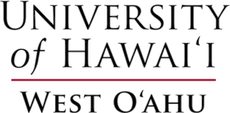
Points: 5
School Website
The University of Hawaii-West Oahu is a public university in West Oahu, Hawaii and one of 10 branches of the University of Hawaii System. UH West Oahu has been recognized as the fastest-growing school of its type in the U.S. for the past two years, with enrollment surging nearly 240 percent between 2006 and 2016 — the most of any public bachelor’s-granting institution in the country. The school confers low-cost bachelor’s degrees in professional studies and liberal arts to more than 2,900 students while maintaining a consistent 18:1 student-to-faculty ratio. Students may choose from seven certificate programs and six bachelor’s degrees in more than 30 areas of study, including undergraduate programs in applied science, business administration, education, humanities, public administration, and the social sciences. One of UH West Oahu’s newest programs, the STEM Center of Excellence, was designed to help improve lab space, develop a bachelor’s degree in facilities management, and create a portal to measure and display seismic activity and current weather conditions.
In-State Tuition: $7,512
Out-of-State Tuition: $20,472
Student-to-Faculty Ratio: 18:1
Graduation Rate: 39 percent
6. Chaminade University of Honolulu
Honolulu, Hawaii
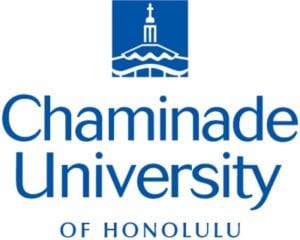
Points: 6
School Website
Located in Honolulu, Hawaii, Chaminade University of Honolulu is a private university that was founded in 1955 by the Roman Catholic Society of Mary. One of three Marianist colleges in the U.S., Chaminade confers affordable undergraduate degrees to more than 2,300 students in more than 20 areas of study as well as nine master’s degrees, specializing in fields such as religious studies, nursing, interior design, forensic sciences, education, criminal justice, business, and biology. The school offers a four-year graduation guarantee, meaning that full-time, daytime undergraduate students who need additional time can complete course requirements at no extra cost. Chaminade offers a number of campus activities and services through the Office of Student Activities and Leadership, including opportunities for co-curricular and out-of-classroom experiences that give students the chance to develop communication and leadership skills. Chaminade also hosts an on-campus ministry that provides special retreats, worship services, and Christian-centered events and community services. Approximately 97 percent of Chaminade students receive financial aid and scholarships.
In-State Tuition: $25,374
Out-of-State Tuition: $25,374
Student-to-Faculty Ratio: 11:1
Graduation Rate: 54 percent
5. University of Hawaii at Hilo
Hilo, Hawaii
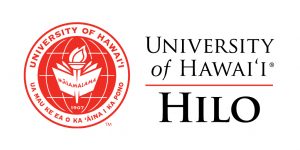
Points: 6
School Website
Founded in 1941 as Hawaii Vocational College, the University of Hawaii at Hilo is a public coeducational university in Hilo, Hawaii and one of 10 general campuses that make up the University of Hawaii System. UH Hilo confers cheap undergraduate and graduate degrees to 3,000 undergraduate and more than 500 graduate students, most of whom reside in Hawaii. The school’s academic calendar is organized into two semesters of 16 to 17 weeks each, one four-week intensive summer session, and one six-week regular summer session. UH Hilo is comprised of six colleges: the College of Pharmacy, College of Natural and Health Sciences, College of Business and Economics, College of Arts and Sciences, College of Hawaiian Language, and College of Agriculture, Forestry, and Natural Resource Management. The school’s most popular majors include studies in psychology, pharmacy and pharmaceutical sciences, kinesiology and exercise science, nursing, communications, and marine biology and oceanography. Research and scholarship are a critical part of student engagement and faculty work, but the school’s primary focus is on providing high-quality bachelor’s degrees and postgraduate education.
In-State Tuition: $7,720
Out-of-State Tuition: $20,680
Student-to-Faculty Ratio: 12:1
Graduation Rate: 41 percent
4. University of Hawaii Maui College
Kahului, Hawaii
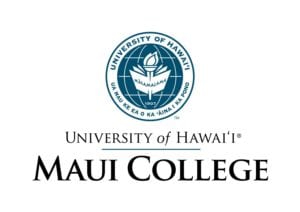
Points: 6
School Website
Located in Kahului, Hawaii on the island of Maui, the University of Hawaii Maui College is a coeducational, public commuter college and one of 10 branches of the University of Hawaii System. An outgrowth of the Maui Vocational School that was established in 1931, UHMC also operates four education centers in Lanai, Molokai, Hana, and Lahaina. Enrolling more than 3,300 undergraduates each year, UHMC confers three inexpensive Bachelor of Applied Science degrees in emerging industries such as applied business and information technology, engineering technology, and sustainable science management as well as associate degrees, certificates, and online programs. With career counseling, math labs, a 15:1 student-to-faculty ratio, and small class sizes, UHMC students enjoy individual, personalized attention and the academic support they require to be successful in college as well as in their future careers.
In-State Tuition: $3,218
Out-of-State Tuition: $8,354
Student-to-Faculty Ratio: 15:1
Graduation Rate: 17 percent
3. University of Hawaii at Manoa
Manoa, Hawaii
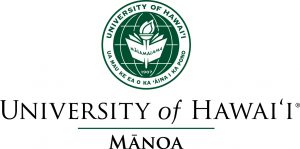
Points: 7
School Website
Founded in 1907, the University of Hawaii at Manoa is a public research university and the flagship campus of the University of Hawaii System that enrolls nearly 13,000 undergraduates from dozens of countries and all 50 states. Located in an affluent neighborhood of Honolulu in Manoa, Hawaii, UH offers an affordable academic selection that is hard to find elsewhere. Providing a wide range of undergraduate and graduate degrees, certificate programs, and minors, UH is not only recognized worldwide for its significant research in genetics, linguistics, Pacific Rim studies, astronomy, marine biology, and oceanography but it is also highly ranked for its academic degrees focused on the environmental and earth sciences. With a commitment to rigorous, in-demand academic programs as well as low tuition of approximately $12,000, a 12:1 student-to-faculty ratio, Division I athletics teams, and more than 200 student organizations and clubs, it is easy to see why UH is one of the top-ranked bachelor’s degree colleges in Hawaii.
In-State Tuition: $11,970
Out-of-State Tuition: $34,002
Student-to-Faculty Ratio: 12:1
Graduation Rate: 60 percent
2. Pacific Rim Christian University
Honolulu, Hawaii
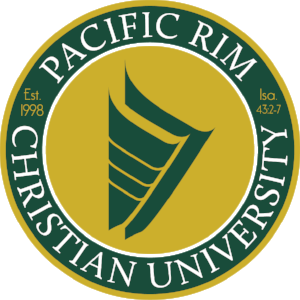
Points: 7
School Website
Located in Honolulu, Hawaii, Pacific Rim Christian University is one of the most highly specialized institutions among all universities in Hawaii. Founded in 1995 as the School of Church Planters in response to the need for Christian ministry and leadership training, PRCU seeks to serve the large Christian community throughout the state, enrolling around 150 students each year in low-cost associate, bachelor’s, and master’s degrees. From a Bachelor of Arts in Bible and Pastoral Ministry to a Bachelor of Arts in Theology, PRCU’s bachelor’s programs are designed for students looking to further develop their faith and studies in the ministry. Other programs at the bachelor’s level joint degrees in the Bible combined with topics in Christian counseling, Christian ministry, and creative arts in music, dance, media, or film. Students may take advantage of mission trips provided throughout the year, and all students select a local church in which they can volunteer and further develop their skills in Christian ministry.
In-State Tuition: $10,460
Out-of-State Tuition: $10,460
Student-to-Faculty Ratio: 13:1
Graduation Rate: 63 percent
1. Brigham Young University-Hawaii
Laie, Hawaii
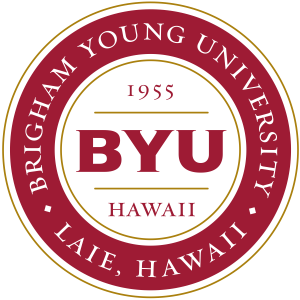
Points: 7
School Website
Founded in 1955, Brigham Young University-Hawaii is a private university that is located in Laie, Hawaii and owned and operated by The Church of Jesus Christ of Latter-day Saints. Approximately 97% of the school’s 2,500 students are members of the LDS Church, and students are required to follow an honor code that aligns with LDS teachings. Combining spiritual growth and secular learning, BYU-Hawaii’s course content not only prepares students for careers in their fields of study but also provides them with spiritual, ethical, and moral enrichment. Through the school’s four colleges, students may pursue cheap bachelor’s degrees in the sciences and math, human development, culture and language, and computing and business. BYU-Hawaii is closely linked with the Polynesian Cultural Center, one of the state’s most popular tourist attractions and the largest living museum in Hawaii, where approximately one-third of BYU-Hawaii students hold part-time jobs as food service personnel, guides, performers, and other positions to help cover the cost of their education at BYU-Hawaii.
In-State Tuition: $5,560
Out-of-State Tuition: $5,560
Student-to-Faculty Ratio: 17:1
Graduation Rate: 56 percent
Frequently Asked Questions
What Are the Most In-Demand Careers in Hawaii for Graduates With a Bachelor’s Degree?
Ever since 1959 when it was founded and admitted into the Union, Hawaii has been a state of perpetual change. As a progressive, growing state, it is constantly shifting on all levels of technology, industry, finance, and in employment. Although the current state of Hawaii’s workforce is changing as a result of several external and internal factors, the state’s economy and job market continue to improve. If you are deciding between different areas of study for your bachelor’s degree, how do you know which careers are the most lucrative and which will offer the best results? Let’s take a look at six hot, in-demand careers in Hawaii that are projected to grow within the next five years.
- School, Counseling, and Clinical Psychologists: Careers in healthcare are in great demand, including the niche area in which mental health professionals work with adolescents and youth. For instance, school counselors are responsible for diagnosing and treating learning disabilities and mental disorders as well as emotional, behavioral, and cognitive issues which may include group, family, child, and/or individual therapies.
- Computer Software Engineers, Applications: It goes without saying that careers in the technology industry are also on the rise. As computer networks grow, those who are skilled computer software engineers in applications will also be in high demand. These professionals are the ones responsible for either developing the underlying systems that control networks or they design the applications themselves.
- Personal Care and Service Workers: Although the majority of growth for personal care and service workers is mainly due to the need for home care aides, there is a significant trend among all professional jobs in the healthcare industry. These professionals perform similar duties to home health aides, but they may also offer routine services such as housekeeping.
- Physical Therapists: Growth in this career can be attributed to recent changes for third-party payers in terms of the restrictions previously put on reimbursement for physical therapy services. Because patients are more likely to be reimbursed, they have more access to physical therapists, thus creating a greater demand. Although the elderly may benefit the most, physical therapists can help anyone who is ill or injured by providing pain management and helping them to improve their movement.
- Network Systems and Data Communications Analysts: This career is anticipated due to the fact that more businesses are beginning to implement modern technologies and thus require assistance installing networks with greater efficiency. These analysts are responsible for supporting, installing, and operating intranets, network segments, wide and local area networks, and other types of communication systems.
- Personal and Home Care Aides: Rapid job growth is expected statewide due to the anticipated increase in the number of elderly people who are becoming increasingly dependent on home care. However, home care aides can assist patients other than the elderly, including those with cognitive impairment, chronic illnesses, and disabilities.
What Are the Highest-Paying Jobs in Hawaii?
Do you know exactly the career you wish to pursue, or are you currently undecided and trying to narrow down your options based on the salary you will make in any given position? In either case, we felt it would be helpful to look at the highest-paying jobs in Hawaii using data from the U.S. Bureau of Labor Statistics (BLS). The BLS is responsible for calculating occupational employment and wage estimates in Hawaii using data collected from both nonmetropolitan and metropolitan areas from employers in all sectors. According to the BLS, the annual mean wage for all occupations in Hawaii was $52,900, or $25.43 per hour, as of May 2018. The top five highest-paying careers in the state include:
- Psychiatrists: $269,800 per year
- Obstetricians and Gynecologists: $237,050
- Family and General Practitioners: $231,750
- Physicians and Surgeons, All Other: $228,470
- Internists, General: $212,360
However, for the purpose of this article, we felt it might be helpful to take a look at other high-paying careers across the state that can be pursued with just a bachelor’s degree or an undergraduate degree an additional experience, training, or certification. Although many of the following 15 careers include managers in different industry sectors, a bachelor’s degree is the minimum education requirement for most of these positions.
- Architectural and Engineering Managers: $140,610
- Postsecondary Health Specialties Teachers: $137,560
- Astronomers: $126,170
- Medical and Health Services Managers: $124,970
- Computer and Information Systems Managers: $124,660
- Physician Assistants: $121,120
- Aerospace Engineers: $121,100
- Petroleum Engineers: $121,050
- Financial Managers: $118,740
- Marketing Managers: $112,800
- First-Line Supervisors of Police and Detectives: $110,470
- Construction Managers: $109,850
- Geoscientists, Except Hydrologists and Geographers: $109,530
- Advertising and Promotions Managers: $108,620
- Public Relations and Fundraising Managers: $108,420
If none of these careers appeal to you and you would like to instead consider industries as a whole, the BLS also provides salary earnings for groups of occupations. For instance, management occupations earned an average annual salary of $107,490 as of May 2018, while healthcare practitioners and technical occupations reported yearly earnings of $97,870. Professionals in legal occupations brought home a median annual wage of $89,110, and architecture and engineering occupations saw average annual earnings of $81,410. Computer and mathematical occupations rounded out the top five highest-paying industries, earning $80,570 across all positions.
What Are the Best Schools in Hawaii for Bachelor’s Recipients?
Not only do Hawaii’s beautiful beaches, tropical climate, and gorgeous scenery make it a tourist hotspot, but it is also a unique and stunning place to pursue a bachelor’s degree. If you are thinking about attending a college or university in Hawaii, it is important to consider not only the cost of attending a school and how well it will prepare you to meet your professional goals but also your return on investment (ROI).
The most significant statistics to look at include early career pay, mid-career pay, and the 20-year net ROI, or the amount you can expect to earn 20 years after graduating with a bachelor’s degree from the schools listed below. The best schools in Hawaii for bachelor’s recipients are those with the highest net 20-year ROIs. Below, we identify earnings for five of the most affordable bachelor’s degree colleges in Hawaii detailed above in order to help you see the big picture in terms of the money you can expect to earn if you graduate from these institutions. Schools are ranked in order from the highest ROI to the lowest ROI, and salary earnings are based on the cost of tuition for in-state students who earned a bachelor’s degree without financial aid, according to PayScale.
- 1. Brigham Young University-Hawaii
– 20-Year Net ROI: $263,000
– Early Career Pay: $49,900
– Mid-Career Pay: $93,100 - 2. Hawaii Pacific University
– 20-Year Net ROI: $262,000
– Early Career Pay: $51,200
– Mid-Career Pay: $93,500 - 3. University of Hawaii at Manoa
– 20-Year Net ROI: $254,000
– Early Career Pay: $50,100
– Mid-Career Pay: $89,200 - 4. Chaminade University of Honolulu
– 20-Year Net ROI: $107,000
– Early Career Pay: $43,500
– Mid-Career Pay: $86,400 - 5. University of Hawaii at Hilo
– 20-Year Net ROI: $68,700
– Early Career Pay:$43,800
– Mid-Career Pay: $67,500
Sitting at the top of the list, Brigham Young University-Hawaii and Hawaii Pacific University are very close in terms of their net 20-year ROIs and salary earnings. These schools are noted for their rigorous academic programs as well as their diverse student bodies. Although Hawaii, in general, is an expensive state to live in, these two schools fare quite well in terms of the money you can expect to gain back after graduating.
Regardless of the institution you attend, nearly every institution of higher learning in Hawaii gives students the chance to study a variety of subjects. For instance, the University of Hawaii at Manoa offers programs in architecture, business, nursing, Hawaiian knowledge, and social work, while students can earn a degree in psychology, history, hospitality and tourism industry management, or business management and marketing at Hawaii Pacific University.
Keep in mind that the major you choose to pursue will significantly impact your future earning potential and that your ROI will change based on your degree. However, the above ROI rankings and pay estimates can provide a starting point and give you a better idea of how much you will earn from these affordable bachelor’s degree colleges in Hawaii and, ultimately, help you gauge how much you should spend on tuition.
AS Staff
This concludes our ranking of the top eight most affordable bachelor’s degree colleges in Hawaii.
Other Rankings of Interest:
25 Best Affordable Online Business Administration Degree Programs (Master’s)
40 Best Affordable One-Year Accelerated Master’s Degree Programs
50 Most Affordable Colleges with the Best Return
25 Best Affordable Online Mathematics/ Statistics Education Degree Programs (Master’s)
25 Most Affordable Master’s of Statistics Degrees
20 Best Affordable Online Colleges for Computer Networking Degree
10 Most Affordable Law Schools in the United States
15 Best Affordable Animation Degree Programs (Bachelor’s)
40 Best Affordable Pre-Med Degree Programs (Bachelor’s)
15 Best Affordable Film Studies Degree Programs (Bachelor’s)

 The Best Colleges
The Best Colleges The Lowest Costs
The Lowest Costs The Highest Returns
The Highest Returns